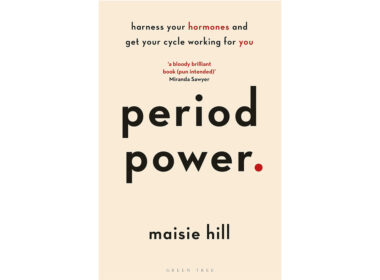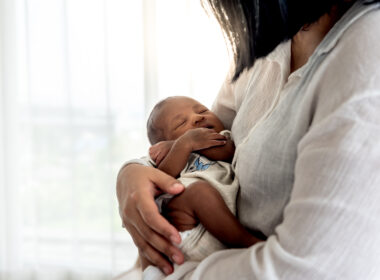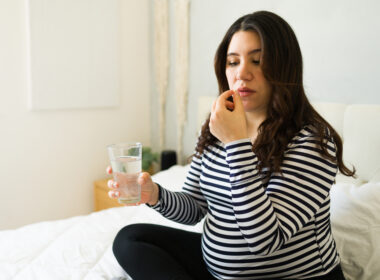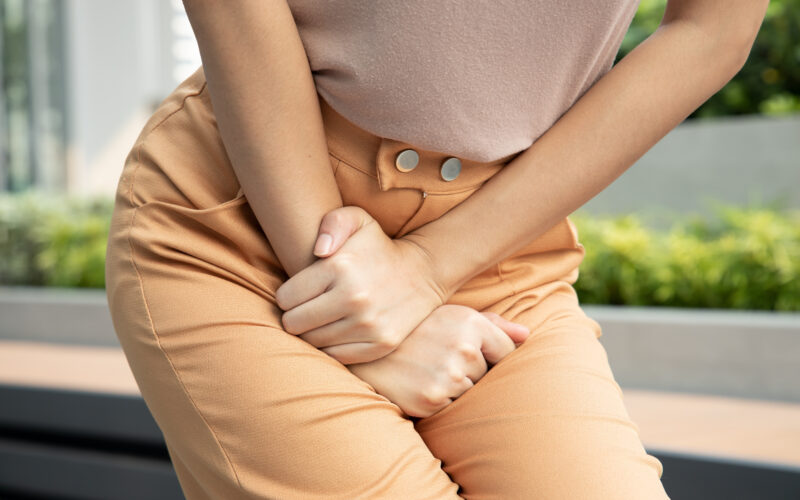“Looking at me, you wouldn’t know that I was ill,” says Hannah, a 24 year old sufferer of interstitial cystitis (IC) who guest blogs for the UK-based Bladder & Bowel Community support group. Hannah was first diagnosed with IC when she was 22, seven years after her painful symptoms began. Her doctors believe that her IC was originally caused by improperly treated chronic urinary tract infections (UTIs), leading to inflammation in her bladder which continued to cause pain for years to come.
Hannah is not alone. Anywhere between 4 and 12 million people in the United States suffer from interstitial cystitis. Most of them are women. In this article, we’ll take a look into what interstitial cystitis is, its potential causes and cures, and its connection to other diagnoses like endometriosis or to the use of hormonal birth control.
What is interstitial cystitis?
Interstitial cystitis (IC) can also be known as bladder pain syndrome (BPS). It is a chronic bladder health syndrome that causes pain or pressure in the bladder. Those with IC can have симптомы that are often also attributed to a UTI, such as pain in the bladder, pain with urination, having to urinate more often or having feelings of urgency. This is because interstitial cystitis causes an inflamed bladder wall that is irritated when it is filled with urine, leading to both bladder pain and feelings of urgency to urinate. Interstitial cystitis can also cause fatigue and bloating, and flare-ups may be precipitated by stress.
Interstitial cystitis (IC) versus urinary tract infection (UTI)
A UTI is different from IC in that UTIs are infections caused by bacteria (typically E. coli) and often resolve with antibiotics. IC, on the other hand, is a chronic inflammatory condition (не an acute infection) and is therefore not treatable by antibiotics. Due to the similar symptoms, IC can sometimes be Ошибочный диагноз as a UTI, however.
While there is no formal medical test that determines whether or not a person has IC, doctors will typically begin by looking at a patient’s medical history to determine if her symptoms are consistent with IC. Doctors will then rule out other diagnoses like a UTI or bladder cancer, performing urine tests and potentially biopsies of the bladder wall and urethra. A biopsy might be used in tandem with a cystoscopy, which is where a small camera is inserted into the urethra to get images of the urinary tract and bladder and a large amount of water is instilled. In some cases, cystoscopy with hydrodistention is performed to help diagnose IC.
What causes IC?
Unfortunately, the direct causes of IC are not currently known, but there are a few possibilities. IC could be caused by defects in the bladder tissue that cause open sores which are then irritated by urine (which is acidic), inflammatory cells (called mast cells) that cause an allergic reaction which trigger IC, or autoimmune issues which cause the immune system to attack the bladder cells and cause damage.
Research is sparse on whether or not recurrent UTIs may cause IC, but one исследование from 2008 found that 18 to 36% of women diagnosed with IC also had evidence of a UTI at the onset of their diagnosis, pointing to some connection between the two bladder issues [1]. There is some indirect evidence to предлагать that IC is an autoimmune condition, as it also has connections with Sjogren’s syndrome, an autoimmune condition often found in those with lupus or rheumatoid arthritis [2][3]. Autoimmunity is far more common in women than in men, which is also true of interstitial cystitis.
Women with endometriosis also have a higher chance of being diagnosed with IC. According to one исследование that looked at common comorbidities (medical conditions occurring at the same time) among women with and without endometriosis, those with endo have a 6.8 times higher likelihood of also having IC than women who do not have endo [4]. If you’re already experiencing frequent pelvic pain and looking for treatment, it might be beneficial to ask your doctor if you could also have IC.
Could birth control cause IC?
Another potential cause of IC that is still being studied is the use of hormonal birth control. A 2020 тематическое исследование found that an 18-year-old female patient started describing burning pain in her pelvic area, along with urinary frequency and blood in her urine [5]. She was not sexually active and the only medication she was on was the combined oral contraceptive pill, which she started taking two weeks before her painful symptoms began. She was diagnosed with a UTI which was subsequently treated, but the pain did not go away. Finally, doctors diagnosed her with IC. She subsequently stopped taking her oral birth control after learning that there might be a link between the two, and she experienced near-complete resolution of her pain within a few months.
Hers is not an isolated case. A систематический обзор of 13 studies on the link between hormonal contraceptives and pelvic floor function (which is negatively affected in women with IC) found significant links between interstitial cystitis and oral contraceptive use at any point— meaning that even if you aren’t on the pill anymore, you might still be at higher risk for IC if you used to be on it [6]. Researchers hypothesize that oral contraceptives may affect pelvic floor function, which can lead to syndromes like IC or other forms of pelvic dysfunction. Other research also links hormonal birth control use with interstitial cystitis, but more research is needed to understand the exact connection between HBC and IC [7].
Researchers hypothesize that oral contraceptives may affect pelvic floor function, which can lead to syndromes like IC or other forms of pelvic dysfunction.
Can interstitial cystitis be treated?
While there is unfortunately no cure for IC, there are well-known lifestyle changes and other treatments that may help ease symptoms. Doctors typically рекомендуем those with IC analyze their eating patterns to determine which foods (such as alcohol, sugar, or acidic foods like tomatoes or fruit juices) trigger flare-ups.
Терапия тазового дна is also highly recommended for IC. Pelvic floor physical therapy (PFPT) is a form of physical therapy that specifically works to ease pelvic floor dysfunction. Patients with IC often have tight pelvic floor muscles that are prone to spasm, which can trigger more pain in the event of a flare-up. Pelvic floor PT can help retrain these muscles to relax and contract when necessary.
Other treatment recommendations include bladder retraining (which is exactly what it sounds like), and certain pain medications. There are even cocktails of medications that are directly put into the bladder when other lifestyle changes are not enough to reduce symptoms, and these are referred to as bladder instillations. Cystoscopy with hydrodistension, which was mentioned above because it is sometimes utilized to help diagnose IC, may also provide temporary relief. It is considered a third-line treatment, though, in part because it must be performed in a hospital and requires anesthesia.
The bottom line on interstitial cystitis
Living with interstitial cystitis can be difficult, but ongoing research will hopefully lead to better understanding of its causes (and therefore how to prevent it). If you think you may be struggling with IC, talk to your doctor about your symptoms and to assess lifestyle changes (such as discontinuing birth control, and replacing it with a fertility awareness method instead) that may help minimize your symptoms.











